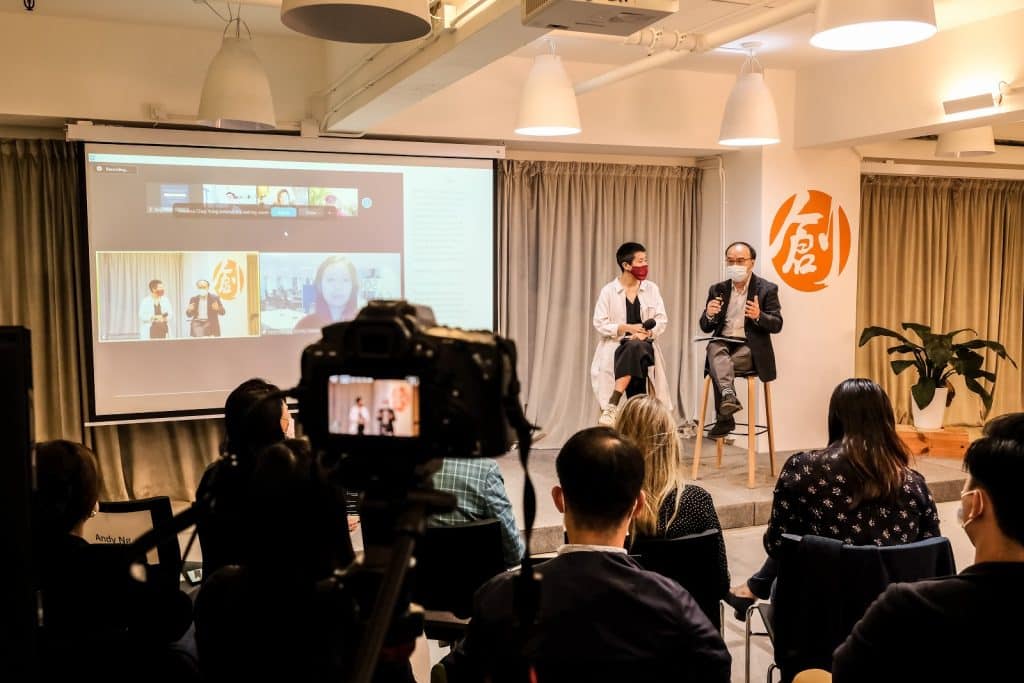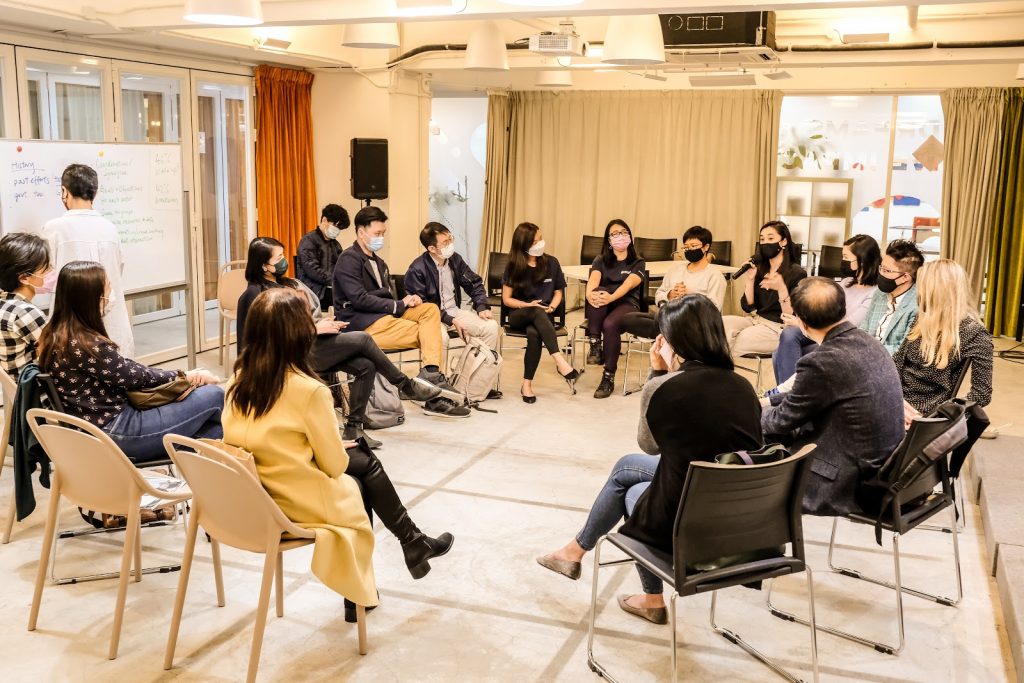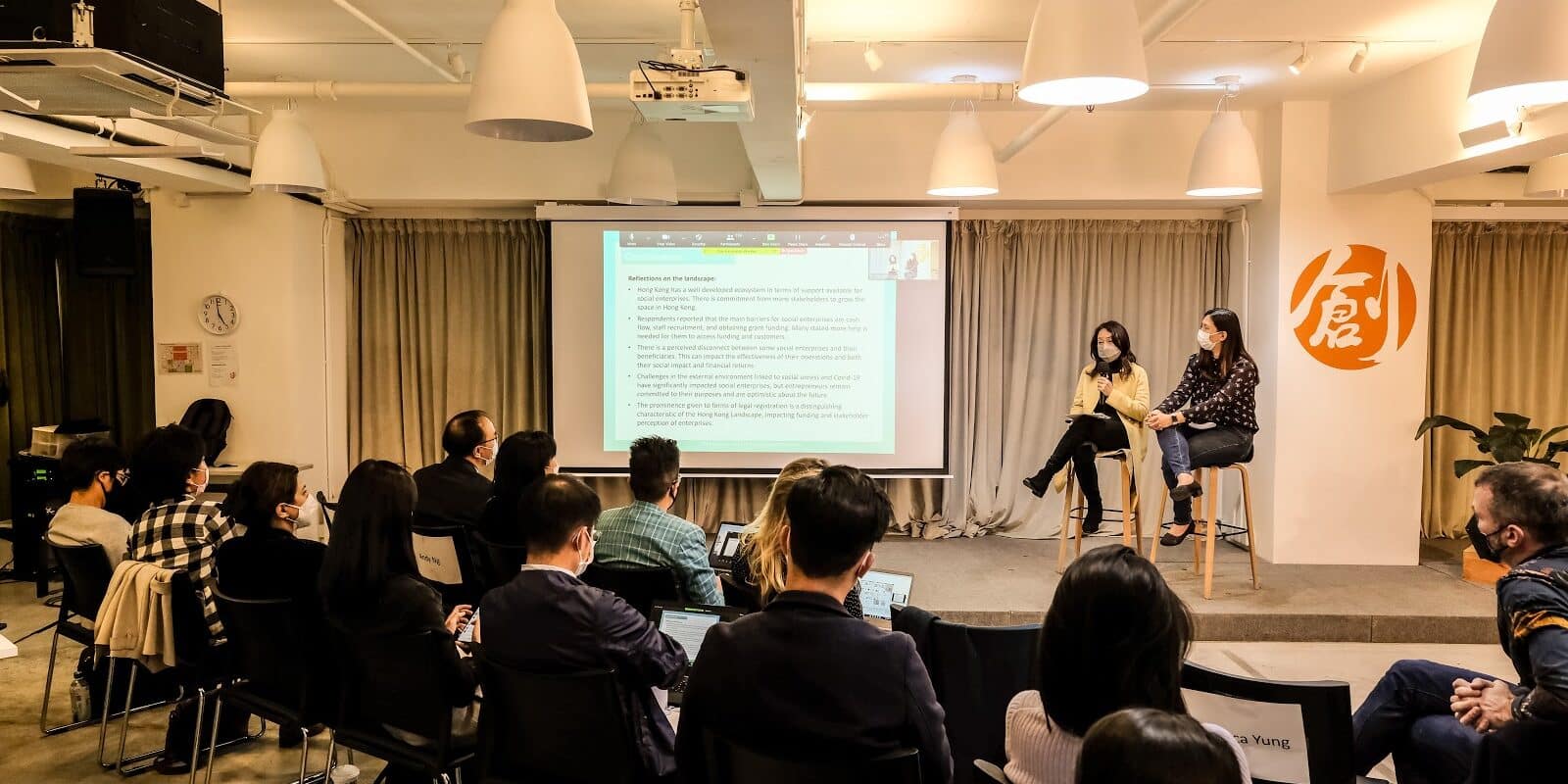細閱只需 5 分鐘
Co-Written by: Michael Ip, Placida Yu, Jasmine Ko
Contributors: Melanie Cheng, Dorothy Lam
On Feb 4th 2021, Dream Impact hosted an on/offline hybrid launch event “Ways Forward For a Collaborative Impact Ecosystem” with over 150 virtual participants for the social enterprise landscape study in Hong Kong together with the British Council, The Social Enterprise Summit, The Social Enterprise Business Center and the General Chambers of Social Enterprise. The event included presenting research insights, panel discussion and breakout sessions with ecosystem leaders to facilitate dialogues on how we can drive collaborations and innovation together for greater and wider social impact in Hong Kong.
In this launch event, the research team presented findings mainly covering priorities and barriers to growth for social enterprises, revenue sources, impact measurement policies and more. The research highlighted SE landscape in Hong Kong involves a few key main actors that shape and support social enterprises’ operating environment, including enablers and capacity builders, investors and financiers, business support organisations, policymakers, and higher education institutions. After conducting surveys with 146 organisations over 10 weeks, findings highlight the environmental and social needs being addressed by social enterprises and the support that the sector needed in order to grow further.
In general, SEs in HK are relatively young and consider themselves to be at a scaling stage. They often registered as private companies limited by shares, with comparatively fewer registering as charities and NGOs. Respondents reported that social enterprises’ main barriers are cash flow, staff recruitment, and obtaining grant funding. Ten percent of social enterprises mentioned not generating revenue yet, but were then found to be receiving seed funding at the early stages of ideation and many continue to rely on other forms of capital for financing. Despite the challenges of the external environment related to social unrest and the pandemic, entrepreneurs remain committed to their purposes and are optimistic about the future.

Comments on from Industry Leaders : How to create a favourable impact ecosystem
The event continued with a panel discussion on how to create a favourable ecosystem to support social enterprises. Andy Ng, Chairman of the Hong Kong General Chamber of Social Enterprises revealed the survival of SE negatively affected by the pandemic. He was not surprised at the difficulties mentioned, as the operations of SEs have taken a strong hit. Some of their annual revenue has dropped by 50% or more.
Andy is yet optimistic for the SE sector. Talking about the investing, he reminded SE founders to focus on convincing and storytelling investors that “they are sustainable businesses”. If SEs opt for impact investment, they have to practise impact management. Yet, it may be challenging for small-scale social enterprises to adopt the plan because of the limited capacity. It is a dilemma for founders.
Karen Ng, Director of Investments for Big Society Capital appreciated the diversity and vibrancy of SEs in Hong Kong. She indicated SEs in Hong Kong are relatively small and fragmented with a limited capacity. She provided suggestions with the example of Diamond Cab and Urban Spring.
“It’a important to maintain a balance between impact integrity and focus on financial sustainability”.
Karen Ng, Director of Investments for Big Society Capital
Karen raised the case of Change Please, a SE training homeless to be baristas in United Kingdom. They have been supported in the past decade by ecosystem players such as a resilience fund and impact measurement agencies. Meanwhile, there are more corporate opportunities and would love to see more engagements between these players.
To further strengthen the connection among interest groups, she suggested finding the “sweet spots”. That is, to use social passion as an incentive for experts, especially those from finance and banking backgrounds, to join the discussion. It will also create linkages and are conversation openers for stakeholders from different backgrounds.
Breakout Room Discussion: How SEs can collaborate to create greater social impact
- Misaligned Support
There are two key suggestions from participants. One, SEs can collaborate and support each other to create synergy and create a greater impact in society. Two, it is crucial to have a centralised platform for SEs (particularly for those newly started) to gain information, resources and relevant networks as the current information is so fragmented and scattered.
- Impact Ecosystem Maturity
The public often has a misconception about the social enterprise sector as they often mix up the definition of nonprofits and social enterprise. One guest shared her stories about her difficulties articulating the concept of social enterprise to her colleagues and stakeholders. Lacking a centralized resource platform is another point. It is crucial for social enterprises to grasp useful connections and resources in all stages, while they may not be capable of exploring potential collaborations with limited headcounts. A centralized platform would definitely benefit both users and service providers.
SEs currently faces the issue of fragmentation of the ecosystem. Germany’s Social Enterprise Network Deutschland (SEND) was a perfect overseas example to illustrate a process whereby ecosystem builders & SE platforms came together to strategize for a common goal and eventually crowdfunded a secretariat team dedicated for ecosystem building, policy advocacy, private sector engagement etc.
- Government Support
Throughout the discussion, the participants suggested that the government can support SEs through funding and considering SEs as procurement providers. Although the government has been offering 3 big public funding (i.e. SIE Fund), there are still unfilled gaps from ideas to investment readiness stage. The government can provide more resources to fund capacity builders on mobilising and supporting SEs in later stages for further growth.
- Talent
A career path is challenging in the SE space, young talent find themselves having to sacrifice a career of purpose in exchange for stability. While the focus is often on youth talent, it is also necessary to rebrand the social impact career path to appeal to talent with 3-5+ years of experience, whose skills would contribute to the sector immensely and immediately. Creating roles for talent rather recruiting talent to fit roles would be a better approach.

Conclusion: Proposed Action Steps to a Collaborative Impact Ecosystem
The landscape study connects stakeholders across sectors by providing a common ground for further discussion. We discussed challenges and opportunities. We summarized some possible steps in the following paragraphs.
How to reframe the concept of SE is one of the key challenges. SE founders often find it challenging to clarify the blurry perception of the differences between SEs and nonprofits. For this, government agencies and sector players should take further steps. On top of telling the public an “impact story”, shifting the business focus to the quality of products and services itself can be one of the viable options for SEs to take and build customer loyalty.
The capacity limit of SEs is another concern. Seed money and scale-up funding have always been favorable options inside the sector. Despite more available options of fundings and agencies, writers suggest having clearer instructions of funding requirements. This enables founders to have better preparation before entering an application process.
Guest speakers also emphasized the need for education in social impact assessment (SIA). The research-based method allows social start-up to create useful data for several purposes such as showcasing the “impact” to funders and agencies; supporting the internal strategy review and establishing a common ground for cross-sector communications. Yet, one participant explained that most of the social start-up founders lack awareness of conducting an impact assessment. Even though they are willing to do so, the social start-ups with a limited budget can barely afford the current market options. Some self-driven social entrepreneurs turn to practice the measurement themselves.
However, the result may not be satisfactory due to limited human capital and relevant knowledge. Some participants recommend that more talents should be trained to conduct SIA while funding agents can also subsidize the grantee to conduct the impact assessment.
So, what’s your action? Do you have any action plans or suggestions in mind? Please do not hesitate to reach out to Dream Impact if you have. We would love to hear from you.
You may also want to know:
Dream Impact’s Impact Ecosystem: https://www.dreamimpacthk.com/impact-ecosystem/
Our vision and impact philosophy: https://www.dreamimpacthk.com/impact-philosophy-our-vision/

